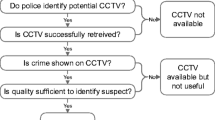Abstract
As expressed in the White Paper, the time has indeed come to make transparency of custodial interrogations the rule, rather than the exception. Widespread implementation of the recommendation to video record interrogations in their entirety and with a camera perspective that permits a clear view of both the suspect and interrogator(s) will achieve this goal admirably. The White Paper authors also imply that such video recordings will likely make it easier for later fact finders to detect and reject false confessions. For the sake of the innocent, all hope that this will be the case; however, anecdotal evidence and, more important, relevant psychological science suggest that it would be prudent to temper expectations in this regard.
Similar content being viewed by others
References
Fischhoff, B. (1975). Hindsight ≠ foresight: The effect of outcome knowledge on judgment under uncertainty. Journal of Experimental Psychology: Human Perception and Performance, 104, 288–299.
Kassin, S. M., Drizin, S. A., Grisso, T., Gudjonsson, G. H., Leo, R. A., & Redlich, A. D. (2009). Police-induced confessions: Risk factors and recommendations. Law & Human Behavior. doi:10.1007/s10979-009-9188-6.
Lassiter, G. D., & Lindberg, M. J. (2009). Video recording custodial interrogations: The Devil’s in the details. Open Access Journal of Forensic Psychology, 1, E3–E5. Retrieved from http://www.forensicpsychologyunbound.ws/.
Meissner, C. A., & Kassin, S. M. (2004). “You’re guilty, so just confess!”: Cognitive and behavioral confirmation biases in the interrogation room. In G. D. Lassiter (Ed.), Interrogations, confessions, and entrapment (pp. 85–106). New York: Kluwer Academic/Plenum Publishers.
Scheck, B., Neufeld, P., & Dwyer, J. (2003). Actual innocence: When justice goes wrong and how to make it right. New York: New American Library.
Trainum, J. (2007, September 20). I took a false confession—So don’t tell me it doesn’t happen! The California Majority Report. Retrieved from http://www.camajorityreport.com/index.php?module=articles&func=display&ptid=9&aid=2306.
Author information
Authors and Affiliations
Corresponding author
About this article
Cite this article
Daniel Lassiter, G. Videotaped Interrogations and Confessions: What’s Obvious in Hindsight May Not Be in Foresight. Law Hum Behav 34, 41–42 (2010). https://doi.org/10.1007/s10979-009-9202-z
Published:
Issue Date:
DOI: https://doi.org/10.1007/s10979-009-9202-z




